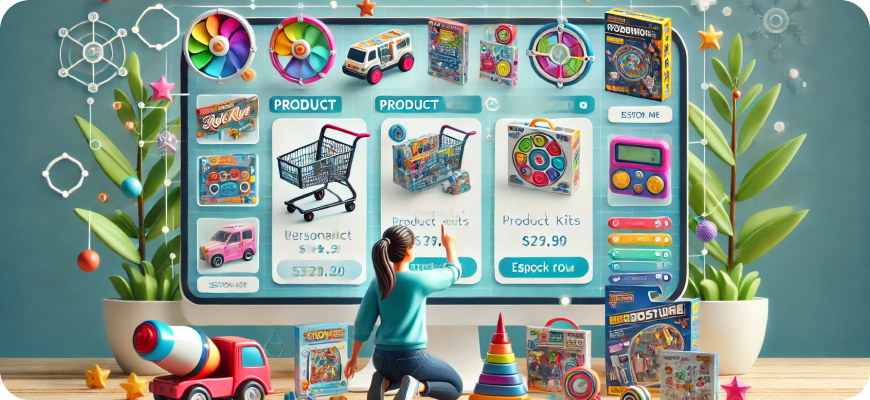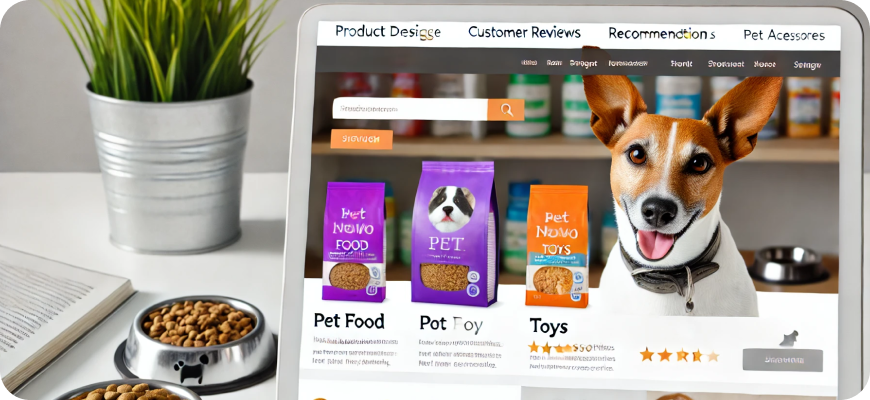Creating valuable contents for your Ecommerce customers: A guide to content marketing
Content marketing has become an essential strategy for e-commerce businesses looking to engage customers, build brand authority, and drive sales. In a highly competitive digital marketplace, creating valuable content can differentiate your brand, attract new customers, and foster loyalty among existing ones. Content marketing goes beyond promoting products; it’s about offering genuine value, building relationships, and positioning your brand as an expert in your niche. This guide will explore how to create valuable content for your e-commerce customers and implement a successful content marketing strategy.

1. Understand Your Target Audience
The foundation of any successful content marketing strategy is a deep understanding of your target audience. To create content that resonates, you need to know who your customers are, what they care about, and how your products fit into their lives.
Steps to Understand Your Audience:
- Create Customer Personas: Develop detailed profiles that represent different segments of your audience, including demographic information, interests, pain points, and purchasing behavior.
- Analyze Customer Data: Use data from your website analytics, social media insights, and customer feedback to identify trends and preferences.
- Engage Directly with Your Audience: Conduct surveys, ask for feedback, and monitor social media conversations to gain deeper insights into your customers’ needs and interests.
Example:
An e-commerce brand selling outdoor gear might create customer personas such as “Weekend Hikers” and “Serious Mountaineers,” each with unique content needs and preferences.
2. Define Your Content Marketing Goals
Before creating content, it’s important to define what you hope to achieve through your content marketing efforts. Clear goals help shape your content strategy and ensure your efforts are aligned with broader business objectives.
Common Content Marketing Goals:
- Increase Brand Awareness: Expand your reach and introduce your brand to new audiences.
- Drive Website Traffic: Attract more visitors to your e-commerce site.
- Boost Customer Engagement: Foster a deeper connection with your audience through comments, shares, and interactions.
- Generate Leads and Sales: Use content to guide customers through the sales funnel and encourage purchases.
- Build Authority and Trust: Establish your brand as a credible source of information in your industry.
Example:
A skincare brand may use content marketing to educate customers about skin health, build trust, and ultimately encourage product purchases.
3. Choose the Right Content Types
Different types of content resonate with different audiences. To maximize the impact of your content marketing efforts, it’s essential to choose the formats that align with your goals and appeal to your target customers.
Common Content Types for E-Commerce:
- Blog Posts and Articles: Informative and engaging articles can help boost your SEO rankings, drive organic traffic, and provide valuable insights to customers.
- Product Guides and Tutorials: Teach customers how to use your products effectively or solve specific problems.
- Videos: Video content, such as product demos, behind-the-scenes footage, and tutorials, can engage customers and increase time spent on your site.
- Infographics: Visually appealing infographics break down complex information and are easily shareable on social media.
- Social Media Content: Use posts, Stories, Reels, and live sessions to engage followers and build community.
- User-Generated Content (UGC): Encourage customers to share photos, reviews, and testimonials to showcase real-life use of your products.
- Email Newsletters: Share curated content, promotions, and updates with your subscribers.
Example:
An online fitness store might create video tutorials demonstrating how to use workout equipment, supplemented by blog posts with workout plans and health tips.
4. Develop a Content Calendar
A content calendar helps you plan and organize your content efforts. It ensures consistency, allows for better resource allocation, and helps you align content with key marketing events or promotions.
How to Create a Content Calendar:
- Map Out Important Dates: Identify holidays, seasonal events, and product launches that are relevant to your e-commerce business.
- Plan Content Themes: Develop themes for each month or quarter based on customer interests, product promotions, or trends in your industry.
- Schedule Content Types: Balance different types of content to keep your audience engaged (e.g., mix blog posts, videos, and social media posts).
- Set Deadlines: Assign deadlines and responsibilities to ensure that content creation stays on track.
Example:
A fashion retailer might use a content calendar to plan content around major holidays (e.g., Valentine’s Day outfit ideas) and seasonal promotions.
5. Focus on SEO to Drive Organic Traffic
Search engine optimization (SEO) is critical for driving organic traffic to your e-commerce site. By optimizing your content for relevant keywords, you can improve your search engine rankings and attract more visitors.
SEO Best Practices for E-Commerce Content:
- Conduct Keyword Research: Use tools like Google Keyword Planner or Ahrefs to find relevant keywords that your target audience is searching for.
- Optimize Content for Keywords: Include keywords naturally in titles, headings, meta descriptions, and body text. Avoid keyword stuffing, as this can harm your rankings.
- Create High-Quality, In-Depth Content: Focus on providing valuable information that answers customer questions and solves their problems.
- Use Internal and External Links: Link to relevant pages on your site and authoritative external sources to improve credibility.
- Optimize Images and Videos: Use descriptive file names, alt tags, and compression tools to improve loading times and SEO performance.
Example:
A pet supply store might write blog posts about “Best Dog Toys for Puppies” and optimize them for relevant search terms to attract pet owners looking for toy recommendations.
6. Create Content That Solves Problems
One of the most effective ways to add value to your e-commerce customers is by creating content that solves their problems. This positions your brand as a helpful resource and builds trust with your audience.
Types of Problem-Solving Content:
- How-To Guides: Provide step-by-step instructions for using your products or achieving specific goals.
- FAQs: Address common questions and concerns that customers have about your products or industry.
- Troubleshooting Content: Help customers overcome challenges or issues they may face with your products.
Example:
A home improvement store could create a video series on DIY home projects, showing customers how to use their tools and supplies effectively.
7. Use Storytelling to Connect Emotionally
Storytelling is a powerful way to engage your audience and create an emotional connection with your brand. By sharing authentic stories, you can make your brand more relatable and memorable.
Storytelling Ideas for E-Commerce:
- Share Your Brand Story: Highlight your brand’s mission, values, and journey to connect with customers on a personal level.
- Customer Success Stories: Feature testimonials and case studies that show how your products have positively impacted customers.
- Behind-the-Scenes Content: Give customers a glimpse into your brand’s daily operations, product creation process, or team culture.
Example:
A sustainable fashion brand might share the story of how its products are ethically made, highlighting the artisans who craft each piece and the environmental impact of its processes.
8. Leverage Social Media to Amplify Your Content
Social media is an excellent platform for amplifying your content, reaching new audiences, and fostering engagement. Tailor your content to each platform to maximize impact.
Tips for Social Media Content:
- Use Eye-Catching Visuals: Create visually appealing posts that grab attention and stand out in crowded feeds.
- Engage with Followers: Respond to comments, ask questions, and encourage user participation to build a loyal community.
- Run Social Media Campaigns: Use hashtags, challenges, and contests to encourage followers to share your content and engage with your brand.
Example:
A beauty brand might create a TikTok challenge encouraging customers to show their makeup transformations using its products, boosting visibility and engagement.
9. Encourage User-Generated Content (UGC)
User-generated content (UGC) is a valuable form of social proof that can enhance your content marketing efforts. Encourage your customers to create and share content featuring your products.
Benefits of UGC:
- Builds Trust: Real customer content is seen as more authentic and trustworthy than brand-generated content.
- Increases Engagement: Customers are more likely to engage with content that features real people using your products.
- Amplifies Reach: When customers share content with their followers, it increases your brand’s visibility.
How to Encourage UGC:
- Host Contests and Challenges: Incentivize customers to share content by offering prizes or discounts.
- Feature UGC on Your Website: Display customer photos, reviews, and testimonials on product pages.
- Create a Branded Hashtag: Encourage customers to use a specific hashtag when sharing content related to your brand.
Example:
A travel gear company could ask customers to share photos of their adventures using the brand’s products, with the best photos featured on the company’s website and social media.
10. Measure and Optimize Your Content Marketing Efforts
To maximize the impact of your content marketing strategy, it’s crucial to measure performance and make data-driven adjustments.
Metrics to Track:
- Website Traffic: Monitor how many visitors your content is driving to your site.
- Engagement: Track likes, comments, shares, and time spent on content.
- Conversions: Measure the impact of content on lead generation and sales.
- Bounce Rate: Analyze how often visitors leave your site after viewing one page.
- Social Shares: Evaluate how often your content is being shared on social media platforms.
How to Optimize Content:
- A/B Test Different Content Formats: Experiment with different types of content (e.g., videos vs. articles) to see what resonates best.
- Update Existing Content: Refresh outdated content with new information or improved visuals to maintain relevance.
- Use Customer Feedback: Incorporate feedback from customers to create content that addresses their evolving needs.
Example:
An e-commerce company selling fitness equipment might notice that blog posts on workout tips outperform product guides. They could then prioritize creating more fitness-related content.

Conclusion
Content marketing is a powerful way to create value for your e-commerce customers, build brand loyalty, and drive sales. By understanding your audience, setting clear goals, choosing the right content types, and focusing on SEO and storytelling, you can create a content strategy that resonates and delivers results. Remember to measure your efforts, encourage user-generated content, and continuously optimize your approach to stay ahead in a competitive market. With the right content marketing strategy, your e-commerce brand can become a trusted resource that customers turn to time and time again.






